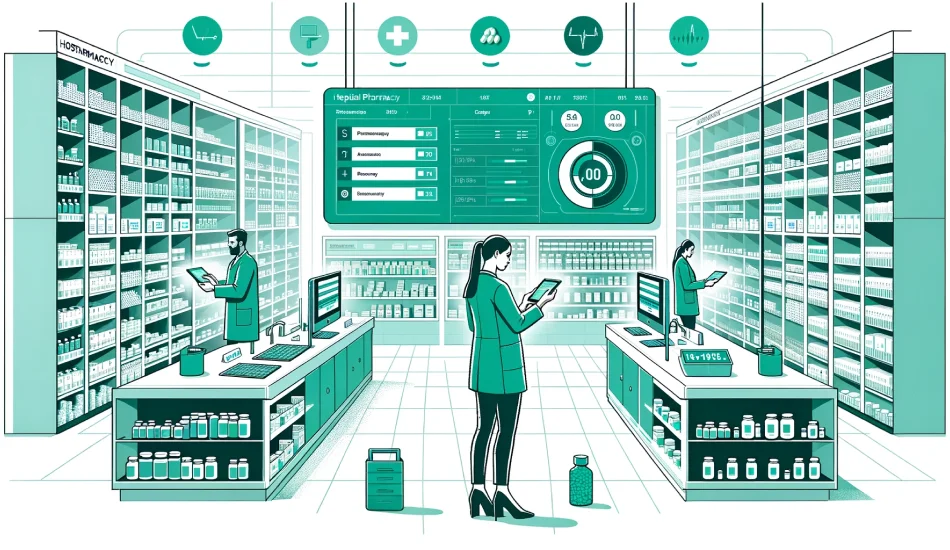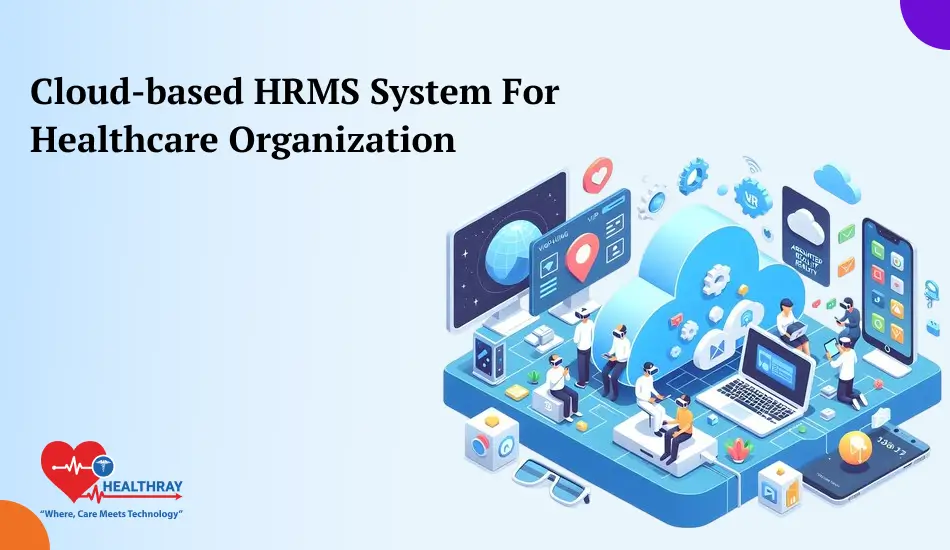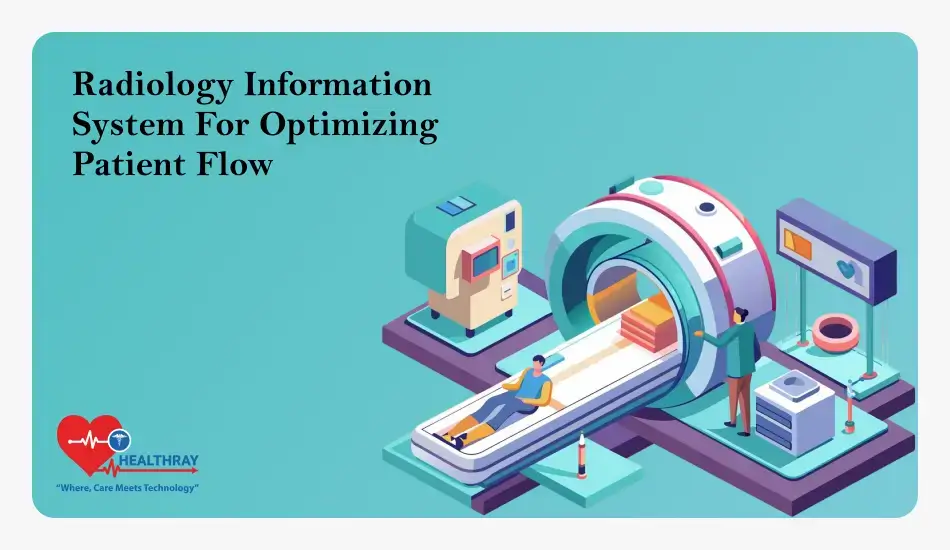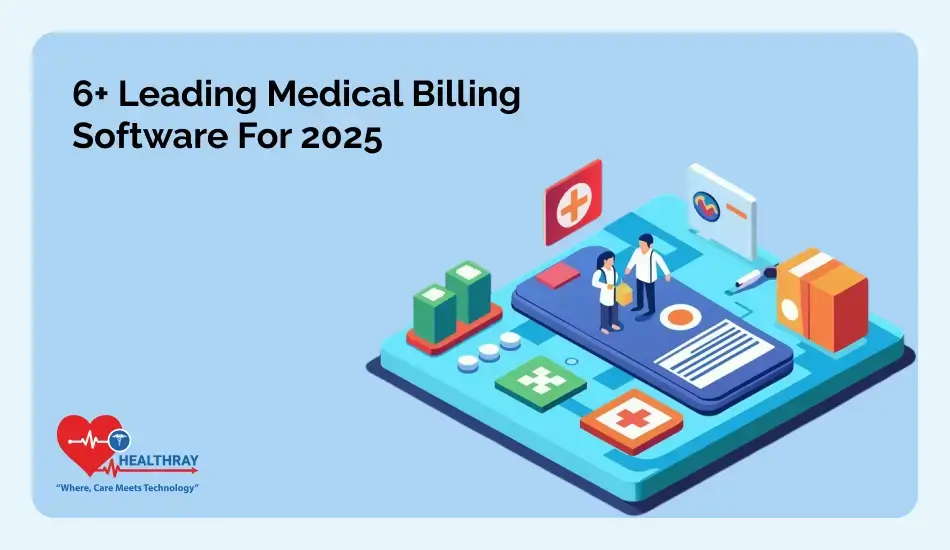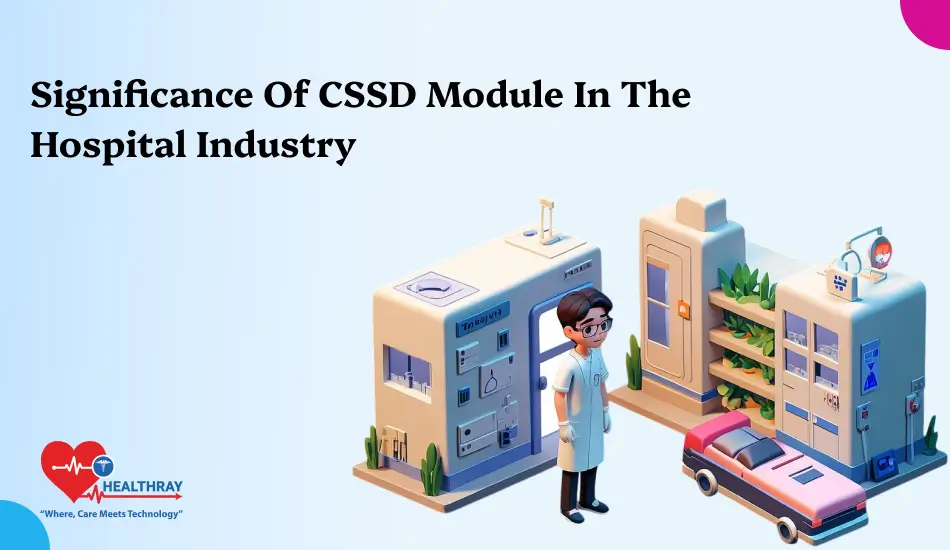Quick Summary: Hospital inventory management software is indispensable for waste reduction and the guarantee of life-saving products in health facilities. The system supports “number informed decisions”, presents now happening details and connects smoothly with other systems that are already present. However, while adopting such good approaches it is necessary to consider the peculiarities of a health care establishment.
Introduction
The efficiency and effectiveness of the entire healthcare industry depend on how well hospitals manage their inventories. Therefore, this includes everything connected with medical supplies such as orders, payments, procedures and purchases among others. It also ensures that healthcare flows well in addition to keeping records for things like medical supplies and prescription drugs.
For the healthcare sector to provide the best possible patient care, a variety of items are needed, such as supplies, equipment, and drugs. Thus, managing these medicinal supplies effectively is essential to their organization. Hospital processes may be streamlined by putting best practices into practice or by selecting the finest hospital inventory management software.
Taking care of patients comes first in healthcare institutions, making inventory management an important and difficult job.
As a result, giving top priority to accurate inventory management systems is crucial for improving inventory cost control and guaranteeing a smooth operational workflow. Explore top hospital management software development strategies for effectively managing inventory. In order to provide insights into efficient inventory management in hospitals, this investigation will examine several facets of hospital inventory management software, including features, advantages, and best practices. Watch this space for updates on this crucial aspect of hospital operations.
Precise inventory prediction minimizes losses, enhances a substantial amount of profits, and minimizes waste. Additionally, the hospital management software bestows in amplifying client satisfaction rate. Best for detecting the exceptional stock, which has been used in rare cases and stored from past few months. It provides an efficient hospital practice such as stock management, vendor management, error management, and invoice documentation.
What Is Hospital Inventory Management Software?
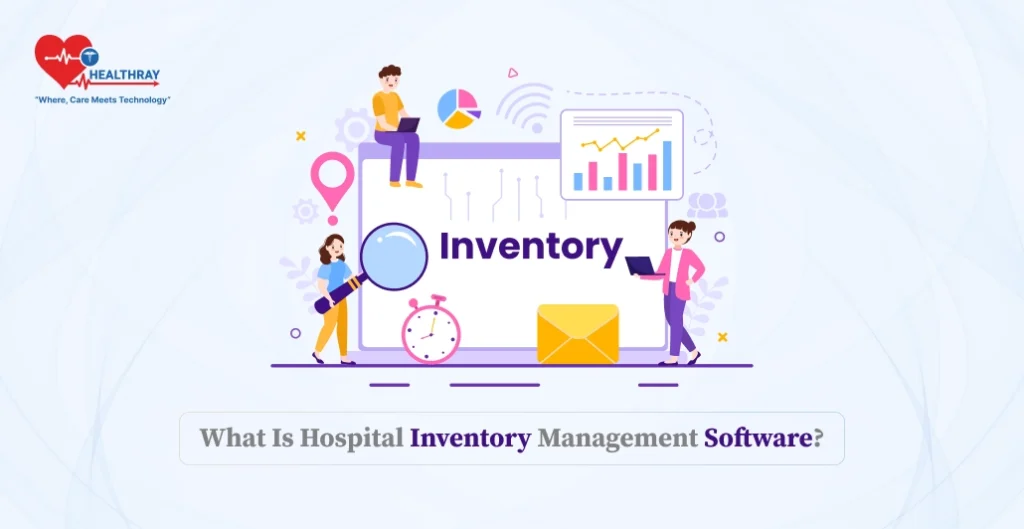
Essential resources, such as medications, surgical tools, and medical equipment, such as gloves and injectors, are vital in the world of medical institutions. It is a professional obligation to guarantee these resources’ availability, accessibility, and appropriate flow while keeping accurate records. Hospital inventory management software effectively manages this work and provides a solution to a number of material management issues.
Systems for managing hospital inventories are essential for monitoring everything that is kept in medical facilities. Through the keeping of thorough records of sales, costs, and information regarding consumable and expired goods, these systems facilitate efficient management. Medical inventory management software makes the otherwise difficult chore of inventory control simpler by getting rid of antiquated and ineffective inventory management procedures.
Purchasing a reliable cloud-based healthcare inventory management programme has several advantages.
With the use of this programme, inventories may be categorised in a number of ways, including registering equipment and including maintenance information or arranging pharmaceuticals according to their expiration dates. Hospital inventory management software becomes essential for healthcare practitioners that oversee large organisations, particularly those operating on a larger scale. This programme helps to alleviate inventory management worries, freeing up time to concentrate more on providing high-quality patient care.
What Kinds Of Hospital Inventory Management Systems Are There?
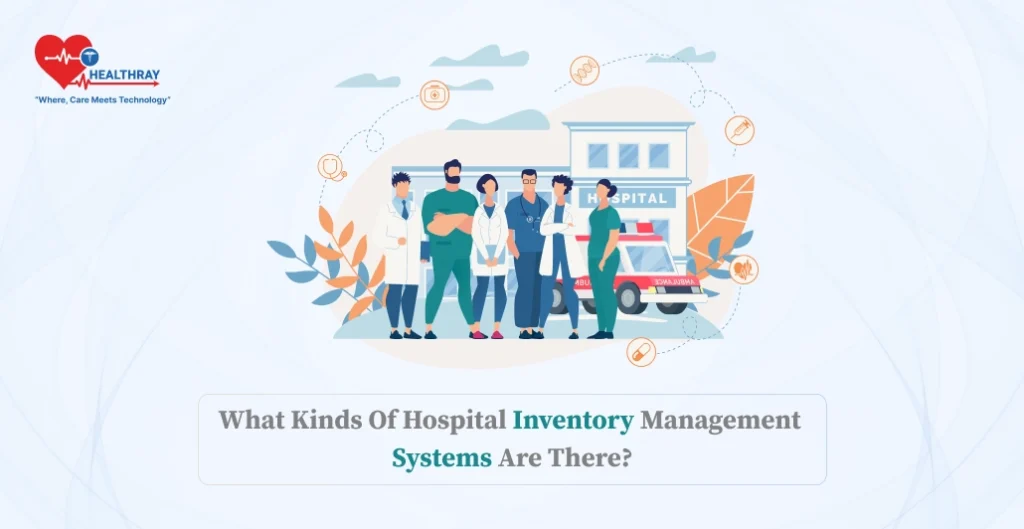
Periodic Inventory Management is entering data by hand and updating employee performance information on a regular basis, usually once a week or so. This strategy works well for smaller healthcare institutions, but it becomes unfeasible for bigger establishments. Employees manually update supply and equipment records using this approach, which might result in mistakes.
In order to prioritise accuracy, larger healthcare organisations must use increasingly sophisticated and automated management systems. The main disadvantage of periodic inventory management is the inaccuracies that arise from manual entering, which takes time away from other duties. Smaller facilities are most suited for this strategy, especially when it comes to inventory tracking of minor things.
On the other hand, perpetual inventory management is a system that automatically refreshes the stock without requiring human labor. This system can easily track medical assets and items by utilizing advanced software and RFID technology, thus simplifying inventory management in healthcare institutions.
The cost of installing workforce software to improve hospital efficiency is high, but its benefits outweigh the costs because it greatly reduces manual errors. Perpetual inventory systems, on the other hand, guarantee up-to-date records of incoming purchases and deliveries including new additions and subtractions.
The automation relieves staff from this burden, which in turn gives them time to focus more on providing patient care. Demand projections, alerts and notifications are done automatically thereby improving productivity as well as quality of care for patients while at the same time streamlining inventory control.
Essential Elements of a Healthcare Inventory Management System

Centralized inventory management being part of hospital inventory management software is essential since it consolidates corporate stock control across interconnected modules. Information provision is streamlined through this centralised approach as it brings together all types of data in one place thus encouraging better cooperation between departments with respect to improved inventory handling.
Modern hospital inventory management systems are equipped with a function called Real-Time Prescription Data, which allows for the creation and tracking of data in real-time while meeting operational demands, particularly for pharmacy inventory systems. Prescription data is processed and accepted by this automated solution, which also offers real-time analysis and integrated solutions to guarantee compliance. For this you can also enjoy the advantages of hospital inventory management software.
Improving hospital inventory management efficiency requires reporting of business operations. Reports generated by contemporary software are informative and give a clear picture of the state of the inventory. These reports are essential for improving efficiency, cutting expenses associated with operations, and making well-informed decisions.
The automation of an effective inventory management system is necessary to enable the assignment of tasks. This action reduces errors, averts missed essential information, increases productivity, simplifies material movement and frees time for other responsibilities. For the healthcare industry selecting an inventory management system involves complaisance. It must be government regulations played by, managing many inventories, supervising pharmacy workflow and easily interfacing with existing healthcare systems.
Another significant component which controls the efficiency of an inventory management system is its flexibility. Therefore, it should have responsiveness to specific needs and changing conditions in order to enhance its flexibility and inventory management through specification and redefinition of its components.
Just not only for storing and tracking inventories but anticipates well along with complete documentation. Furthermore, it creates stock reports, monitors details, and captures inventory images. Creates multiple folders or single folders and creates multiple files under and it depends upon the requirements. The hospital inventory management system records historical data and inspects medical stocks.
What Are The Advantages Of A Hospital Inventory Management System?
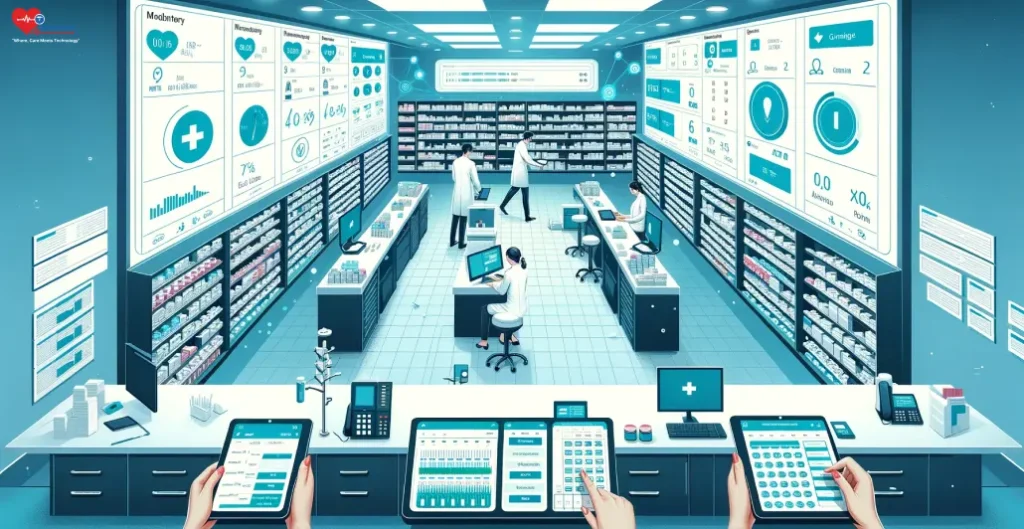
Employing healthcare inventory management software streamlines and simplifies the process of tracking items. Because of this volatility, medical facilities’ supply of healthcare products fluctuate as much. You can complete tasks of inventory management with less human labour because of this software’s ability to automate procedures.
Lowering errors, making analytics simple, and preserving the supply chain are all essential components of inventory management that are applicable all year round. Human-performed traditional procedures frequently resulted in errors and poor stock management. One can reduce error risk by hospital inventory management software, which guarantees accurate data processing and contracts for bulk purchases. Efficient stock management is possible by the synchronisation of orders and stock adjustments.
One useful aspect of inventory software is real-time tracking, which gives you regular updates on inventory data. This feature makes it possible to handle all inventory activities by providing access to real-time stock counts at the time of extra sales. When supplies are running short or when items don’t arrive at the specified place, the system can also issue alerts.
Healthcare companies may save costs by optimising their inventory management, which also helps to prevent expenses related to medicine waste and other human error-related problems. Hospitals benefit from the precise data produced by the inventory management system in terms of budget adherence and stock shortage avoidance. Automation is a big benefit as it reduces losses from stock-outs and overstocking, two issues that hospitals and other healthcare organisations frequently deal with. One can increase total cost using inventory management systems.
What Are The Best Practices For Inventory Management In Hospitals?

Start with a Sturdy Database
Start your inventory management best practices by creating a complete inventory database that tracks all of your goods and equipment. Make sure to include important information such as location, amount, expiration date, and expiration date in this database to help with resource utilisation and decision-making. A well-structured database improves the whole inventory management process and provides the basis for precise tracking.
Make Use of a Tracking System and Label Every Inventory Entry
Inventory Entry
To improve the effectiveness of inventory management system in healthcare facilities, put in place a cutting-edge, automated system. This system makes it possible to monitor the supply chain in real time and makes procurement easier. To guarantee accuracy in tracking, you should also assign a unique identification to every inventory item to connect to the inventory database.
Assign Explicit Accountabilities
Assembling team members into discrete roles in accordance with inventory management system best practices improves responsibility. Clearly define roles and duties, including ordering supplies, keeping track of consumption, and managing inventory minimums. Give the team the tools they need to complete their responsibilities quickly and effectively. This will help to create a more accountable and orderly workflow.
Learn About Usage Trends for Medical Equipment
Use data to your advantage to learn important things about medical equipment. Maintain a thorough log of all the supplies and equipment so that you can do changes to optimise inventory, spot inefficiencies, and guarantee improved utilisation. Using a data-driven strategy encourages cooperation with clinical leadership and helps make well-informed decisions.
Put Supply Management Systems into Practice
Expand the scope of inventory management strategies to include supply management systems in hospitals and other healthcare institutions. This proactive strategy reduces the possibility of human mistake, guarantees consistency, streamlines paperwork, produces thorough reports, and guarantees compliance. Create explicit ordering and replenishment procedures to avoid shortages, make equipment tracking simple, and maximise the productivity of hospital managers and medical staff. You can streamline hospital facilities by using an all-inclusive strategy, saving money and time. It helps learn about what services do hospitals provide post discharge?
Know How Healthray Can Help in the Development of Hospital Inventory Management Software?
Examine how Healthray’s state-of-the-art software development can revolutionise hospital inventory management.
- Custom Solutions: We provide specialised solutions to deal with the unique inventory problems that healthcare institutions have.
- Enhanced Efficiency: Healthray’s solutions maximise supply availability, reduce waste, and optimise stock levels.
- Data-Driven Insights: Our platform provides real-time analytics, allowing for better inventory control through educated decision-making based on data.
- Seamless interaction: To reduce disruptions during deployment, we place a high priority on seamless interaction with current systems.
- Security Priority: We give strong data security measures top priority since we understand how sensitive patient care documents might be.
- Scalability: Our solutions adapt to your specific demands, regardless of the size of your clinic or hospital.
Advanced hospital management software development can help your healthcare facility. Give the technology to Healthray so you can focus on providing the best care. Please do not hesitate to contact us regarding the creation of precise and automated software for managing healthcare inventories.
Conclusion
I hope the material above has given you some understanding of the different facets of hospital inventory management software. You may make use of functions such as stock management, asset tagging, and real-time monitoring. Additionally, you can generate reports based on our previous discussions. Systems for managing medical inventories help make well-informed decisions.
Using an efficient inventory management system enables effective handling of inventory data for your employees. Following its best practices helps expedite procedures. This enables you to prioritise patient care and devote attention to important duties.
Being successful in the healthcare industry is difficult and not as simple as it may appear. But implementing best practices for hospital inventory management—especially with the aid of specialised software—can be quite advantageous. This guarantees that there is no compromise on patient safety.
